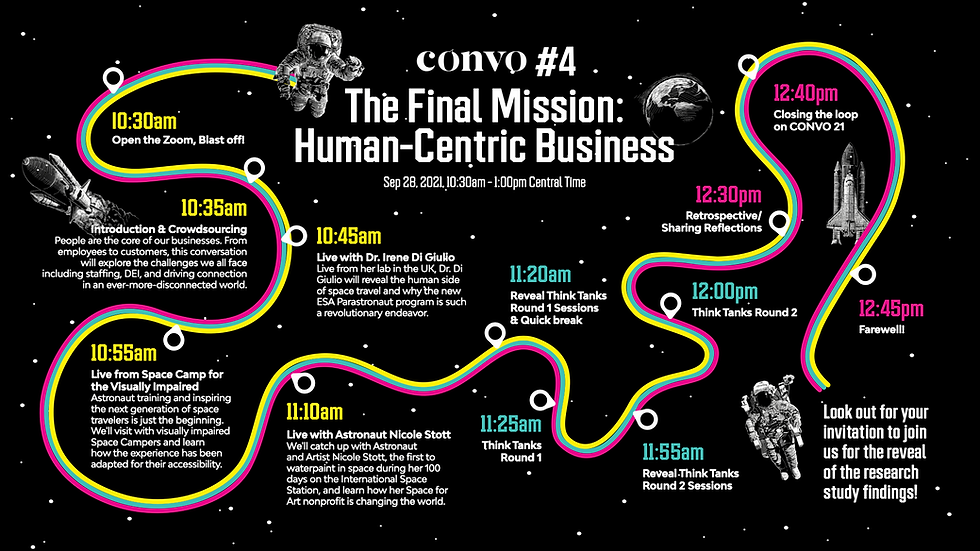"This is your captain speaking... 👩✈️"
- Banu Kannu
- Sep 22, 2021
- 3 min read

"Good afternoon ladies and gentlemen. This is your captain speaking. First I'd like to welcome everyone onboard. We are currently cruising at an altitude of 33,000 feet at an airspeed of 400 miles per hour..."
It’s a universal announcement that any frequent flyer will immediately recognise. And the rest of the announcement sets an expectation for what’s ahead for you and your fellow passengers.
To ensure participants get the most out of an event, it needs setting up in a similar way.
We call it ‘Prepping and Priming’. These details basically serve as guardrails for an event, ensuring those who join are aware what they will be expected to do, and what they will gain in exchange for their efforts. And it can truly add value to their experience.
One of the most famous examples of how prepping and priming adds value is Dîner en Blanc™. To join, you need to follow a strict set of 'rules'. They determine everything from dress code to code of conduct on the day. To an outsider they might seem overly rigid, even 'exclusive'. But the flip side is true, in that they serve as inclusive cues for those who have committed to joining the event and choose to uphold its values.
Having said that, prepping and priming doesn't need to be overly complicated.
Prepping can be as simple as explaining the format of your event in your invitation, and what participants can expect from joining. Basically, the practicalities.
We often use Journey Maps for this purpose. They clearly communicate the various steps a participant will be taken through. And their visual nature immediately sets the 'tone' you can expect; be it serious or fun (but in our case, usually fun).

Priming, on the other hand, is a little more involved. It’s about getting participants' mindset, as well as their energy, ready for the event. Priya Parker refers to it as a Temporary Constitution in her book The Art of Gathering, and Mary Davidson from one of our favourite new podcasts Better Events calls it Know Before You Go. We often refer to them as Rules of Engagement.
For example, ahead of an in-person event, you might tell participants you’ll be providing a locker room for their mobile phones while sessions are going on. This immediately tells them you’re taking the “please keep your mobile phones on silent or switched off” rule to the next level. You’re telling them, “we don’t even want you to have the temptation to glance quickly at your phone”.
And if you’re online, tell participants to be prepared to have their cameras on, mics on, energy on. They need to know that they can’t be doing the ironing or meal prep in the background like we’ve all done so many times over these past 18 months.
Importantly, we use prepping and priming to manage expectations around what participants will actually be doing when they join. Because there are so many PowerPoint-fests, most people expect to show up to an event and just passively sit there. We see that as a massive wasted opportunity, when their combined experience could easily be shared to benefit each other. But you can't just surprise people with an expectation to contribute. You need them to join expecting to actively participate, with an explanation that what you put in is what you get out of the experience.
Some other examples of priming we’ve used:
- Use an FAQ format, framing the information as questions a participant might have
- Pre-determine topics that are off-limits; but make it fun, with a Covid 'swear jar' for example
- Offer tips for presenting well virtually - lighting, distance to camera etc
By the way, recording a little video clip is a great way to share such detail.
What about you? Do you have any examples of prepping and priming that you’ve seen or used?
#prepping #priming #managingexpectations #setforsuccess #events #conferences #virtualevents #virtualconferences #eventprofs #uncommonconferences




Comments